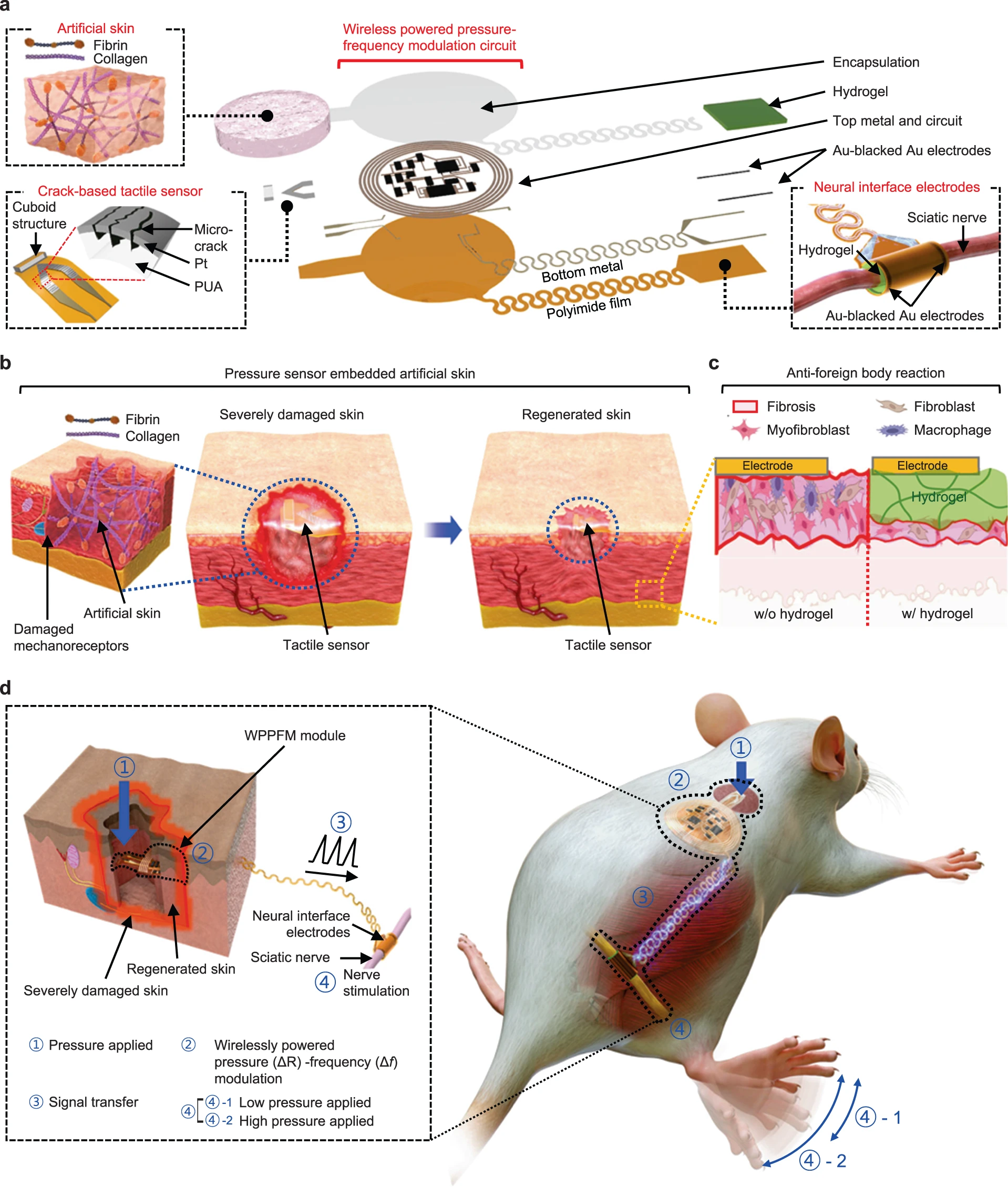
Next-Generation Artificial Skin: Advancing Tactile Sensation and Promoting Wound Healing

Overall schematic of the WTSA and converted tactile signal transfer process to stimulate the sciatic nerve.
A new study published in Nature Communications has revealed an innovative advancement in skin regeneration and sensory restoration. Researchers have developed the Wireless Powered Tactile Sensory System Embedded Artificial Skin (WTSA), a novel technology designed to address severe skin damage and restore lost tactile sensation.
The WTSA targets the profound challenges faced by individuals with extensive skin damage from burns, cancer, chemical exposure, or industrial accidents. Such injuries often lead to significant structural damage to the skin and disruption of the nervous system, resulting in permanent loss of tactile function that can drastically impact daily life.
This innovative system offers a solution by providing a highly biocompatible replacement for severely damaged sensory functions. The WTSA incorporates collagen and fibrin-based artificial skin (CFAS) to promote rapid wound healing and regeneration, addressing both the immediate and long-term needs of the damaged skin. Additionally, the system’s neural interface electrodes are coated with hydrogel to minimize foreign body reactions, enhancing the integration of the artificial skin with the body.
The WTSA has shown impressive stability in operation, as demonstrated by quantitative analyses of leg movement angles and electromyogram (EMG) signals in response to varying pressure intensities. This evidence confirms the system’s reliable performance and its potential to restore tactile sensation effectively.
This breakthrough represents a significant advancement in regenerative medicine and sensory restoration, offering new hope for individuals suffering from severe tactile sensory dysfunction. The WTSA combines advanced materials science with innovative engineering to address one of the most challenging aspects of skin injury recovery, marking a major step forward in enhancing the quality of life for those affected.
Figure detailed explanation: a An exploded view schematic of WTSA composed of artificial skin, crack-based tactile sensor, WPPFM circuit, neural interface electrodes and fibrin coating to minimize foreign body reaction. b Accelerated skin regeneration process through an ECM-based artificial skin composed of collagen and fibrin. c Suppression of the foreign body reactions by the hydrogel layer for an effective neural stimulation. Created with BioRender.com. d Schematic image of tactile signal modulation and signal transfer process for stimulating the sciatic nerve with respect to the different intensity of applied pressure. Left inset image with dashed box shows the magnified image of the implanted WTSA.
Figure credits: Kang, K., Ye, S., Jeong, C. et al. Nat Commun 15, 10 (2024).
Did you like the news ? Please share it with your circle.